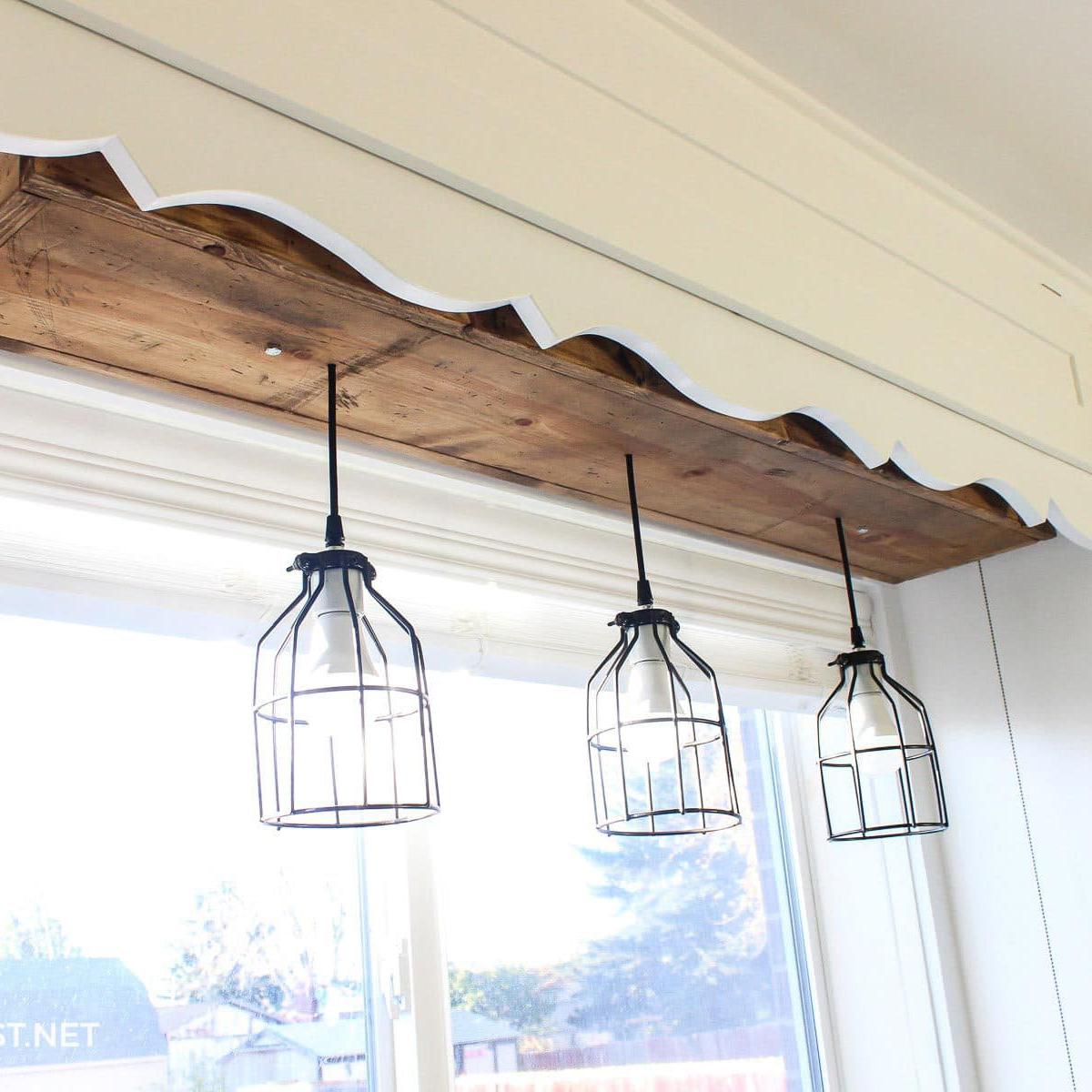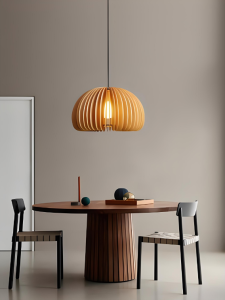
Brilliantly Brighten Your Living Room: Illuminate Your Space with Creative Lighting Ideas
The living room is often considered the heart of the home, a place where family and friends gather to relax, entertain, and spend quality time together. Lighting plays a crucial role in creating a comfortable and inviting atmosphere in this space. It not only illuminates the room but also sets the mood, enhances the decor, and improves functionality. Whether you’re watching a movie, reading a book, or hosting a party, the right lighting can make all the difference.
The impact of lighting on mood, atmosphere, and functionality cannot be overstated. Bright, well-lit spaces can make us feel more alert and energized, while soft, warm lighting can create a cozy and relaxing ambiance. Lorinlighting can also highlight architectural features, artwork, and decorations, adding depth and visual interest to the room. Additionally, task lighting can make specific activities like reading or working easier and more enjoyable.
Key Takeaways
- Lighting is important in your living room to create a comfortable and inviting atmosphere.
- Choosing the right type of lighting, such as ambient, task, and accent lighting, can enhance the functionality and aesthetics of your space.
- Layering your lighting with different types and sources can create a balanced and versatile living room.
- Statement lighting can add drama and personality to your living room, while task lighting can make it more productive and functional.
- Understanding color temperature and using dimmer switches can help you create a customizable and energy-efficient lighting plan for your living room.
Choosing the Right Type of Lighting for Your Living Room
When it comes to choosing the right type of lighting for your living room, it’s important to understand the different types of lighting available. There are three main types: ambient lighting, task lighting, and accent lighting.
Ambient lighting provides overall illumination for the room and sets the general mood. It can be achieved through ceiling-mounted fixtures like chandeliers or recessed lights, as well as wall sconces or floor lamps. Task lighting, on the other hand, is focused on specific activities such as reading or working. It should be bright enough to prevent eye strain but not too harsh or glaring. Examples of task lighting fixtures include desk lamps, reading lamps, and under-cabinet lighting.
Accent lighting is used to highlight specific areas or objects in the room such as artwork or architectural features. It adds depth and visual interest to the space. Picture lights, track lighting, and wall sconces are common examples of accent lighting fixtures. When choosing lighting fixtures for your living room, consider factors such as the size and style of the fixtures, as well as their placement in the room.
Layering Your Lighting: How to Create a Balanced and Functional Space
Layering lighting is essential for creating a well-lit and functional living room. It involves using different types of fixtures at varying heights and brightness levels to achieve a balanced and visually appealing space. By combining ambient, task, and accent lighting, you can create a dynamic and versatile lighting plan.
To effectively layer your lighting, start by considering the different activities that take place in your living room. For example, if you enjoy reading or working in the space, make sure to incorporate task lighting near seating areas or workstations. Additionally, consider using dimmer switches to adjust the brightness levels of your fixtures according to your needs and preferences.
When it comes to placement, aim for a mix of overhead, wall-mounted, and freestanding fixtures to create depth and dimension in the room. For example, you can use recessed lights or a chandelier for ambient lighting, wall sconces or picture lights for accent lighting, and floor lamps or table lamps for task lighting. Experiment with different combinations until you achieve the desired effect.
Statement Lighting: Adding Drama and Personality to Your Living Room
| Lighting Type | Benefits | Considerations |
|---|---|---|
| Chandelier | Creates a focal point, adds elegance and sophistication | May require professional installation, can be expensive |
| Floor Lamp | Provides ambient lighting, adds height and dimension to the room | May take up floor space, can be knocked over easily |
| Table Lamp | Provides task lighting, adds color and texture to the room | May take up table space, can be knocked over easily |
| Wall Sconce | Provides accent lighting, saves space, adds architectural interest | May require professional installation, limited adjustability |
Statement lighting fixtures are a great way to add drama and personality to your living room. They serve as focal points and can instantly elevate the style and ambiance of the space. Chandeliers, pendant lights, and floor lamps are popular examples of statement lighting fixtures.
Chandeliers are often associated with elegance and luxury. They come in a variety of styles and sizes, making them suitable for both traditional and contemporary living rooms. Pendant lights are another stylish option that can be used to create a focal point above a dining table or seating area. Floor lamps, on the other hand, are versatile and can be easily moved around the room to provide task or ambient lighting as needed.
When choosing statement lighting fixtures, consider the overall style and decor of your living room. Opt for fixtures that complement the existing design elements and add visual interest. Don’t be afraid to go bold and make a statement with your lighting choices.
Task Lighting: Making Your Living Room More Productive and Functional
Task lighting is an essential component of a productive and functional living room. It provides focused illumination for specific activities such as reading, working, or doing crafts. By incorporating task lighting into your living room design, you can create a space that is both aesthetically pleasing and practical.
Desk lamps are a popular choice for task lighting in living rooms. They provide direct light for reading or working at a desk or table. Look for lamps with adjustable arms or heads so you can easily direct the light where you need it most. Reading lamps are another option for task lighting in seating areas. They typically have a flexible neck or adjustable shade that allows you to position the light at the perfect angle.
Under-cabinet lighting is also commonly used in living rooms to provide task lighting in areas such as entertainment centers or bookshelves. These lights can be installed underneath cabinets or shelves to illuminate objects or surfaces below. They are particularly useful for creating a warm and inviting ambiance while also making it easier to find and display items.
Accent Lighting: Highlighting Your Favorite Artwork and Decorations

Accent lighting is a great way to highlight your favorite artwork, decorations, and architectural features in your living room. It adds depth and visual interest to the space while drawing attention to specific areas or objects.
Picture lights are commonly used for accent lighting in living rooms. These fixtures are mounted on the wall or ceiling above artwork to provide focused illumination. They come in various styles and sizes, allowing you to choose the perfect option for your space. Track lighting is another popular choice for accent lighting. It consists of a series of adjustable fixtures mounted on a track, allowing you to direct the light where you want it.
Wall sconces are also commonly used for accent lighting in living rooms. They can be installed on either side of a fireplace, above a sofa, or along a hallway to provide soft and indirect light. Wall sconces come in a variety of styles and finishes, making it easy to find one that complements your existing decor.
Color Temperature: Understanding How Color Affects Your Mood and Atmosphere
Color temperature refers to the warmth or coolness of light. It is measured in Kelvin (K) and can have a significant impact on the mood and atmosphere of your living room. Understanding how color temperature works can help you choose the right lighting for your space.
Warm color temperatures (around 2700K to 3000K) create a cozy and inviting ambiance. They are often associated with incandescent bulbs and emit a soft, yellowish light. Warm lighting is ideal for living rooms where relaxation and comfort are the main priorities.
Cool color temperatures (around 4000K to 5000K) create a bright and energizing atmosphere. They are often associated with daylight or fluorescent bulbs and emit a bluish-white light. Cool lighting is ideal for living rooms where productivity and focus are important, such as home offices or study areas.
Neutral color temperatures (around 3500K to 4000K) fall somewhere in between warm and cool. They provide a balanced and natural light that is suitable for most living room activities. Neutral lighting is often used in spaces where versatility is key, as it can easily adapt to different moods and functions.
When choosing the color temperature for your living room, consider the overall style and purpose of the space. Warm lighting is generally more suitable for traditional or cozy living rooms, while cool lighting works well in modern or minimalist spaces. Neutral lighting is a safe and versatile option that can complement a variety of design styles.
Dimmer Switches: Creating a Versatile and Customizable Lighting Plan
Dimmer switches are a valuable tool for creating a versatile and customizable lighting plan in your living room. They allow you to adjust the brightness levels of your fixtures according to your needs and preferences, providing ultimate control over the ambiance of the space.
One of the main benefits of using dimmer switches is the ability to create different moods and atmospheres in your living room. For example, you can dim the lights for a cozy movie night or brighten them up for a lively gathering with friends. Dimmers also help reduce eye strain by allowing you to adjust the lighting to the appropriate level for specific activities.
In addition to creating different moods, dimmer switches can also help save energy and extend the lifespan of your bulbs. By reducing the brightness of your fixtures, you can lower your energy consumption and reduce your carbon footprint. Dimmers also help prevent overheating and prolong the life of your bulbs, saving you money on replacements.
When installing dimmer switches in your living room, make sure to choose compatible fixtures and bulbs. Not all types of lighting are dimmable, so check the packaging or consult with a professional before making any changes. It’s also important to follow the manufacturer’s instructions for installation and use to ensure safety and proper functionality.
Energy Efficiency: Saving Money and Reducing Your Carbon Footprint with LED Lighting
Energy efficiency is an important consideration when it comes to lighting your living room. Not only does it help save money on energy bills, but it also reduces your carbon footprint and contributes to a more sustainable future. LED lighting is one of the most energy-efficient options available today.
LED stands for Light Emitting Diode, which is a semiconductor device that emits light when an electric current passes through it. LED bulbs are up to 80% more energy-efficient than traditional incandescent bulbs and can last up to 25 times longer. This means you’ll not only save money on energy costs but also reduce the frequency of bulb replacements.
LED lighting is also more environmentally friendly than other types of lighting. It produces less heat, which means less energy is wasted. LED bulbs are also free of toxic materials such as mercury, making them safer to use and dispose of. Additionally, LED bulbs are highly recyclable, further reducing their impact on the environment.
When choosing LED lighting for your living room, look for bulbs with the ENERGY STAR label. These bulbs meet strict energy efficiency guidelines set by the U.S. Environmental Protection Agency (EPA) and can help you save even more money and energy.
Bringing Your Living Room to Life with Creative Lighting Ideas
In conclusion, lighting plays a crucial role in creating a comfortable and inviting living room. It impacts the mood, atmosphere, and functionality of the space, making it essential to choose the right type of lighting for your needs. By understanding the different types of lighting available and considering factors such as size, style, and placement, you can create a well-lit and visually appealing living room.
Layering lighting is key to achieving a balanced and functional space. By combining ambient, task, and accent lighting, you can create a dynamic and versatile lighting plan that caters to different activities and moods. Statement lighting fixtures can add drama and personality to your living room, while task lighting enhances productivity and functionality. Accent lighting highlights artwork and decorations, adding depth and visual interest.
Color temperature also plays a significant role in setting the mood and atmosphere of your living room. Warm color temperatures create a cozy ambiance, cool color temperatures energize the space, and neutral color temperatures provide versatility. Dimmer switches allow for ultimate control over the brightness levels, while LED lighting offers energy efficiency and sustainability.
In conclusion, don’t be afraid to get creative with your lighting ideas. Experiment with different combinations of fixtures, colors, and brightness levels to bring your living room to life. Whether you’re looking to create a cozy reading nook, a vibrant entertainment area, or a productive workspace, the right lighting can make all the difference. So go ahead and let your imagination shine!
If you’re looking to upgrade your living room lighting, you may also be interested in learning how to build a cool storage cabinet. This comprehensive guide from Bring Full provides step-by-step instructions and tips for creating a stylish and functional storage solution for your home. Whether you need extra space for books, DVDs, or other items, this article will help you create a custom cabinet that fits your needs perfectly. Check out the article here for all the details.


